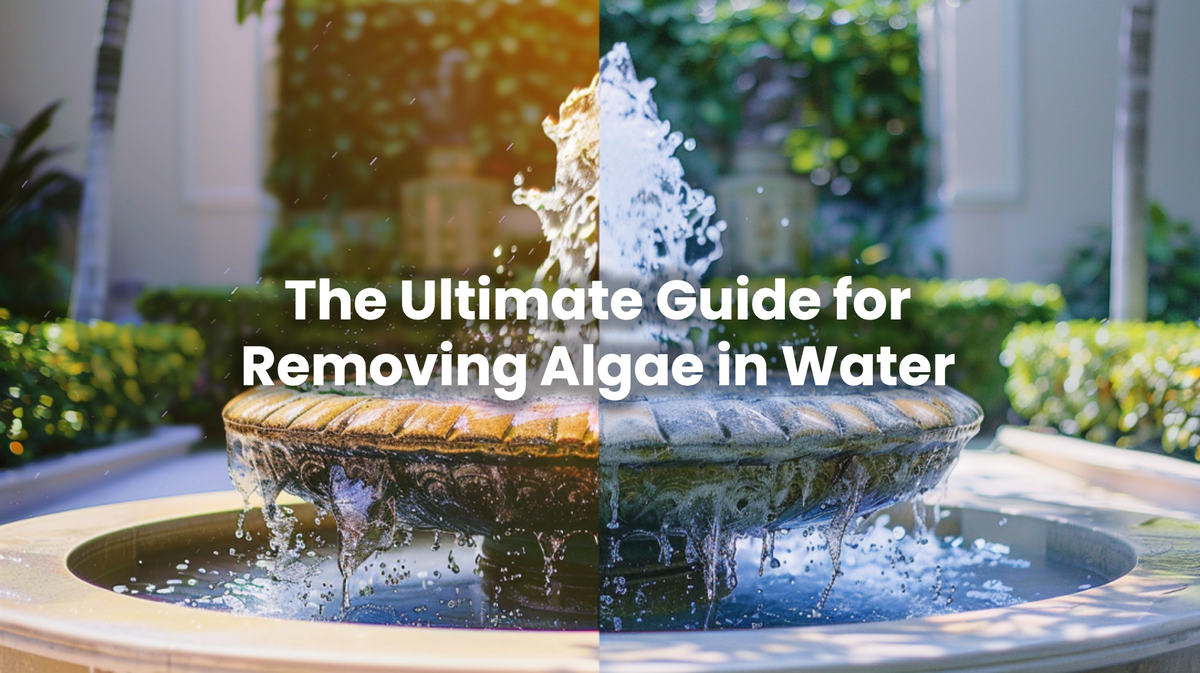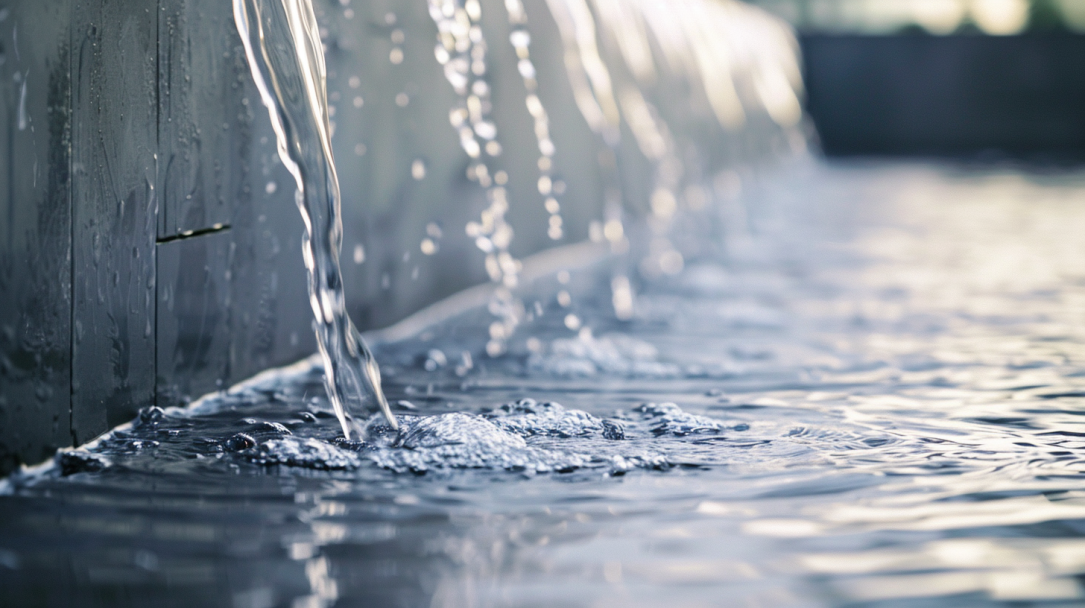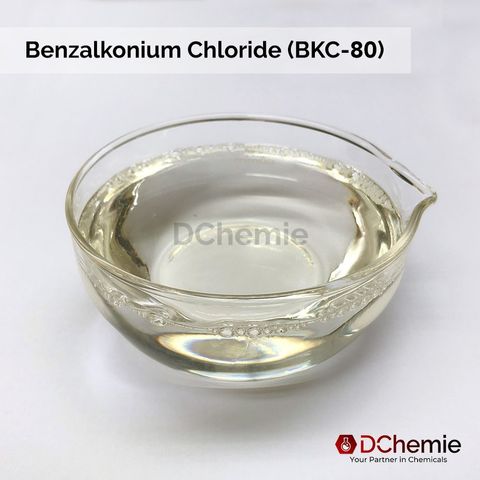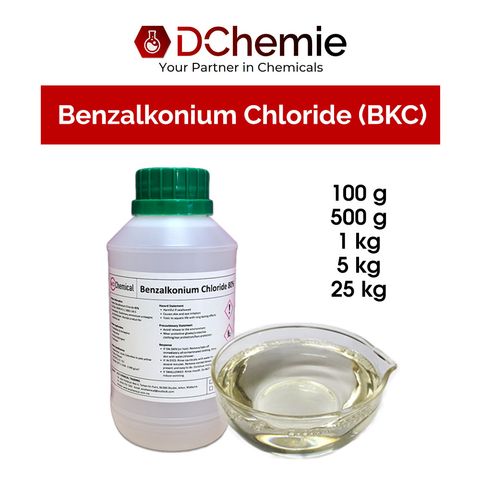
Why Algae Grow in Water Ponds and Fountains?
Algae growth in water ponds and fountains is a common issue faced by many pond owners and garden enthusiasts. Algae, a simple plant-like organism, thrives in aquatic environments under certain conditions. In this section, we'll explore the factors that contribute to algae growth:
- Sunlight: Algae require sunlight to undergo photosynthesis, a process by which they produce energy for growth and reproduction. Water ponds and fountains that receive ample sunlight, especially those exposed to direct sunlight for extended periods, provide an ideal environment for algae to thrive.
- Nutrients: Like all plants, algae require nutrients to survive and grow. These nutrients can enter water ponds and fountains through various sources, including runoff from surrounding soil, decaying organic matter, and fertilizer runoff from nearby gardens or lawns.
- Warm Temperatures: Algae tend to grow more rapidly in warm water temperatures, typically between 24°C to 29°C. During the warmer months of the year, water ponds and fountains may experience increased algae growth due to elevated temperatures.
- Stagnant Water: Stagnant or slow-moving water is susceptible to algae growth. In ponds or fountains with poor water circulation or limited aeration, algae may accumulate on the water's surface or along submerged surfaces.
- Organic Debris: Organic debris, such as fallen leaves, twigs, and dead plant matter, can accumulate in water ponds and fountains over time. As this organic matter decomposes, it releases nutrients into the water, promoting algae growth.
What are the Effects of Algae Growth in Water?
The effects of algae growth in water ponds and fountains can vary depending on the type and extent of the algae bloom. Here are some common effects:
- Water Quality Degradation: Algae blooms can lead to a decline in water quality. As algae grow and multiply, they consume oxygen during the night or in dark conditions through respiration, which can lead to oxygen depletion in the water. This can harm aquatic organisms such as fish and other aquatic.
- Altered Ecosystem: Excessive algae growth can disrupt the balance of the aquatic ecosystem. Algae may outcompete other plants for nutrients and sunlight, leading to a decrease in biodiversity. This can affect the populations of fish, amphibians, and other organisms that rely on the pond or fountain for habitat and food.
- Toxicity Concerns: Some types of algae, such as cyanobacteria (blue-green algae), can produce toxins harmful to humans and animals. These toxins can cause skin irritation, gastrointestinal issues, or even neurological problems if ingested or inhaled.
- Aesthetic Issues: Algae blooms can detract from the visual appeal of ponds and fountains. Excessive algae growth can result in murky, green-colored water, foul odors, and unsightly scum or mats on the water surface.
- Maintenance Challenges: Managing algae growth requires regular maintenance efforts, including physical removal of algae, chemical treatments, or the introduction of algae-eating organisms. This can be time-consuming and costly for pond or fountain owners.
How Do We Solve it? Benzalkonium Chloride for Algae Control
Maintaining the cleanliness of water ponds or fountains is crucial for both aesthetic appeal and the health of aquatic life. Algae growth is a common issue in these water features, detracting from their beauty and potentially causing harm to plants and animals. One effective solution for algae control is the use of benzalkonium chloride (BKC). Now, we'll explore how benzalkonium chloride works to combat algae and provide guidance on its application. Further details about benzalkonium chloride can be found here.
The Role of Benzalkonium Chloride
Benzalkonium chloride (BKC) is a quaternary ammonium compound commonly used as a disinfectant and algaecide. It is effective against a broad spectrum of microorganisms, including algae, bacteria, and fungi. When applied to water features, benzalkonium chloride works by disrupting the cellular membranes of algae, ultimately leading to cell lysis and death.
Unlike some other algaecides, benzalkonium chloride does not affect the pH levels of water, making it suitable for use in environments with sensitive aquatic life. Additionally, it is less likely to cause harm to fish, plants, and other organisms when used as directed.
Application Guidelines
When using benzalkonium chloride for algae control, it's essential to follow proper application guidelines to maximize effectiveness and minimize potential risks. Here are some key considerations:
- Dosage: The appropriate dosage of benzalkonium chloride depends on factors such as the volume of water and the severity of algae infestation. Generally, a concentration of 0.1 to 1.0 parts per million (ppm) is effective for algae prevention and control. Start with a lower concentration and adjust as needed based on results.
- Application Method: Benzalkonium chloride can be applied directly to the water feature using a sprayer or dilution system. Ensure thorough coverage of the affected areas, including the surface of the water and any submerged structures where algae may be present.
- Frequency: For ongoing algae control, benzalkonium chloride may need to be applied regularly, especially during periods of peak algae growth. Monitor the water feature regularly and reapply as necessary to maintain the desired level of algae suppression.
- Safety Precautions: While benzalkonium chloride is generally considered safe when used as directed, it's essential to take precautions to protect yourself and the environment. Wear appropriate personal protective equipment, such as gloves and eye protection, during handling and application. Avoid contact with skin and eyes, and keep out of reach of children and pets.

Conclusion
In summary, benzalkonium chloride is a valuable tool for controlling algae in water ponds and fountains. By understanding how this compound works and following proper application guidelines, water feature owners can effectively manage algae growth and maintain a clean and beautiful environment for all to enjoy. With regular maintenance and the appropriate use of benzalkonium chloride, algae can be kept at bay, allowing water features to thrive.


